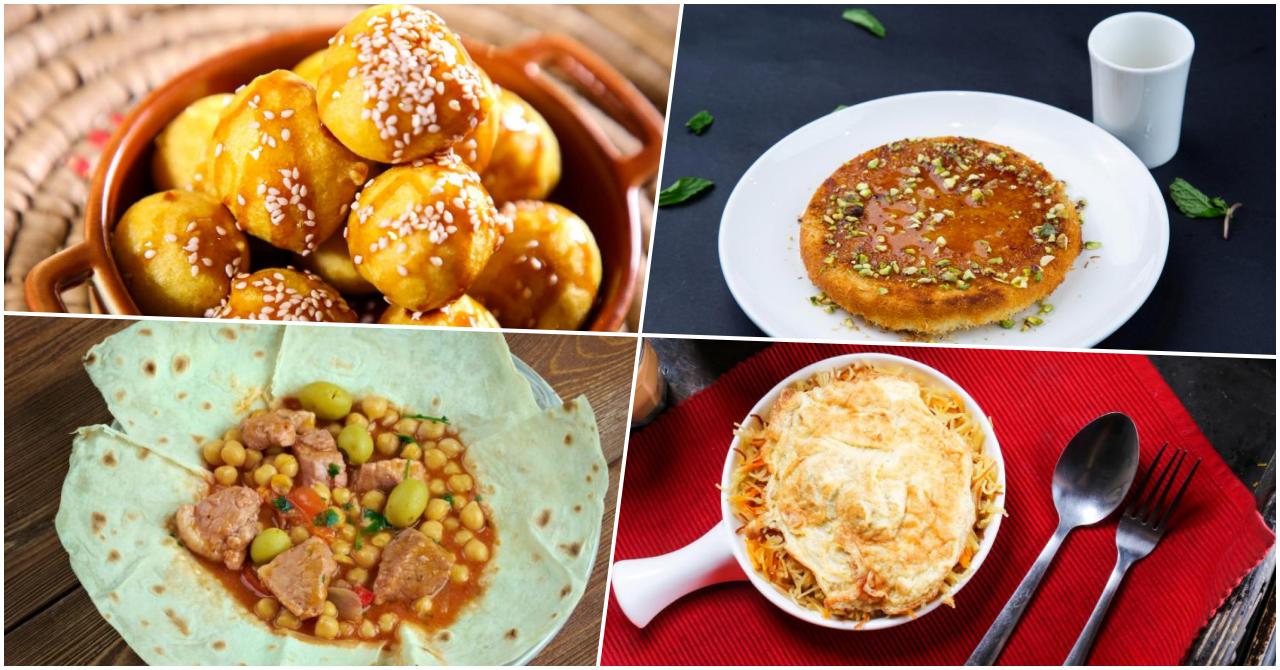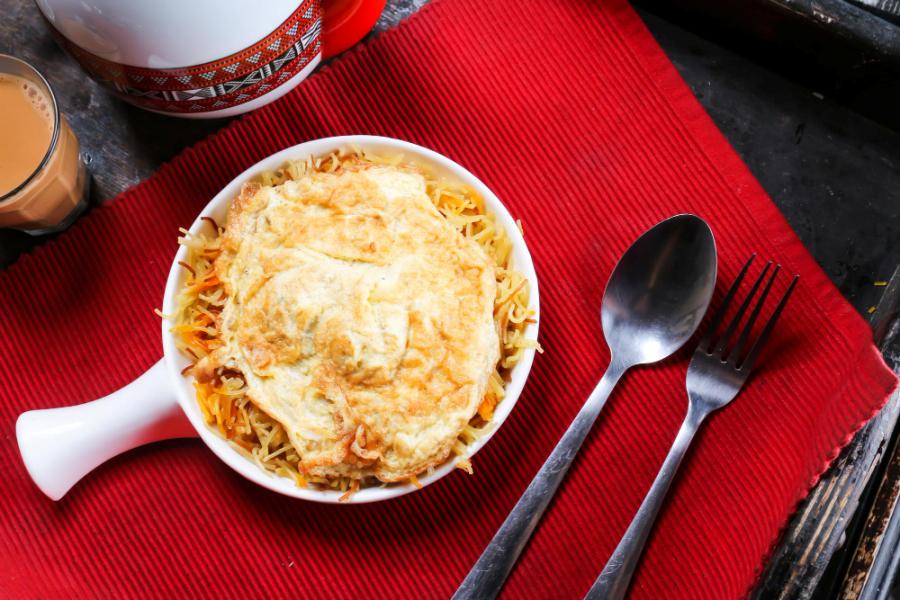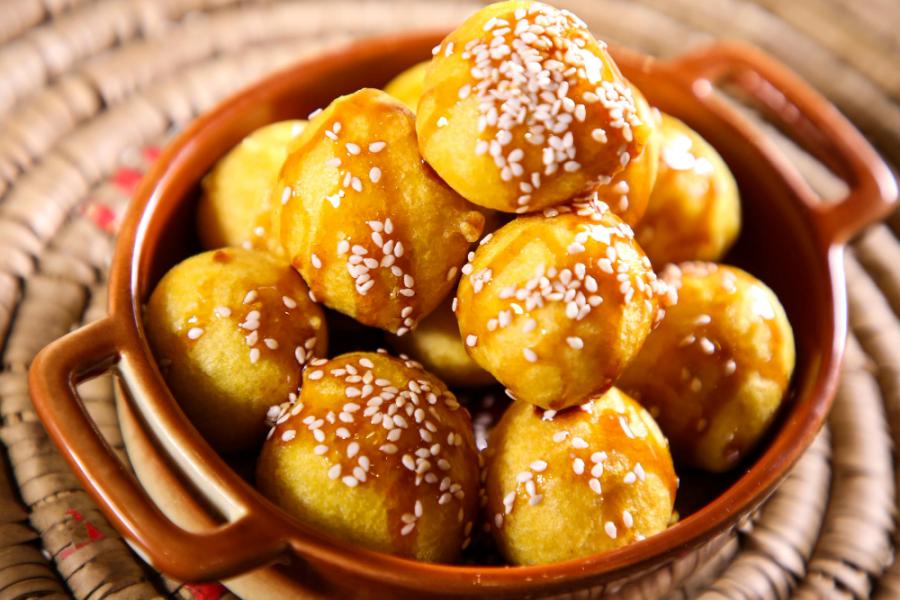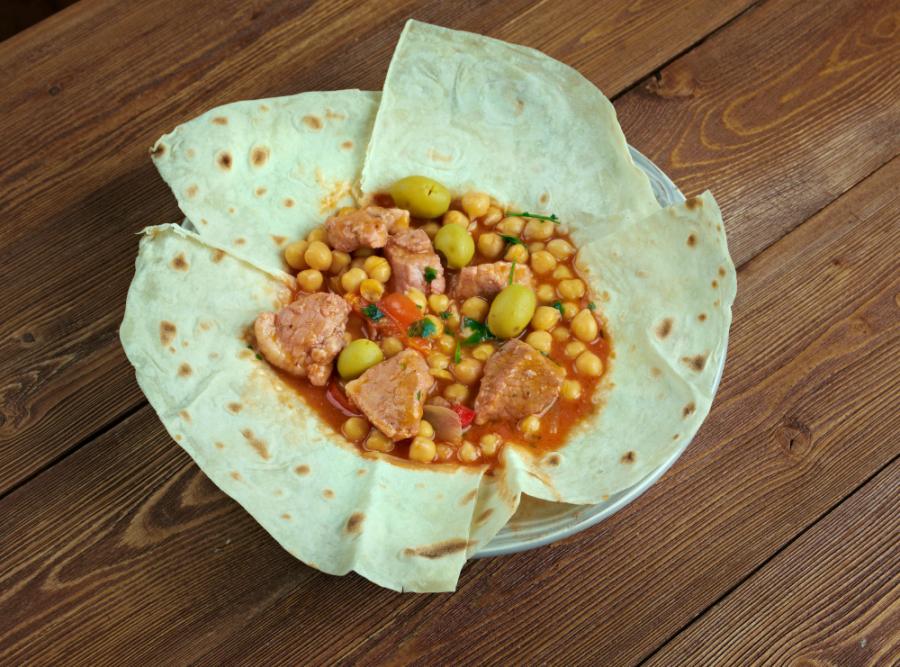Without a doubt, the UAE is one of the most culturally diverse countries in the world, especially when you visit the cities of Dubai and Abu Dhabi. And of course, in a place where there’s a variety of cultures, there’s bound to be a wide range of cuisines.
In Dubai, for instance, there are numerous restaurants that serve international cuisines like Chinese, Japanese, Italian, Mediterranean, Mexican, and so on. For this article, though, we will focus on traditional UAE cuisine. In case you haven’t tried them yet, the following Emirati dishes are definitely a must-try!

Contents
List of Traditional Emirati Food To Try
Emirati cuisine reflects Arabian heritage and shares similarities with the food in neighbouring countries, like Oman and Saudi Arabia. With the passage of time — due to travel, trade, and interaction with other nations — you may also notice the influence of Asian cuisines.
Notably, the common ingredients for UAE dishes include meat, fish from the Persian Gulf, and of course, dates. Without further ado, here’s an overview of traditional Emirati food that you should try during your stay in the country!
1. Balaleet
For breakfast, “balaleet” is a popular choice among Emiratis. It is actually a noodle dish made from vermicelli; its flavour is both sweet and savoury. The vermicelli noodles are sauteed and then boiled. Afterwards, the dish is sweetened with sugar, cardamon, rose water, saffron, and turmeric.
Balaleet is typically served with scrambled eggs or an omelette on top. If you want, you can serve some potatoes or sauteed onions, as well. During Islamic holidays, this dish is usually served as the first meal of the day. Cool!

2. Chebab
Another popular breakfast dish in the UAE is the “chebab,” which is kind of like a pancake. It is made with spices such saffron and cardamom, resulting in a delicious and aromatic dish. Chebab is usually served with date syrup and cheese. Yum!!
3. Ghuzi
“Ghuzi” is considered as one of the UAE’s national dishes; it is a dish that consists of rice and slow-cooked meat. Rice? Slow-cooked meat? Sounds awesome already!
There are actually different ways of cooking and preparing ghuzi. It usually starts with marinating the meat (usually goat or lamb) in spices such as bay leaves, cardamom, cinnamon, garlic, ginger, and saffron — for 8 hours at least.
After marinating the meat, some people prefer to wrap it in date palm leaves and place it in a submerged oven; while others prefer to cook it in an oven for about 4 hours. When the meat is cooked, it is placed on a bed of rice and roasted potatoes, then garnished with currants, raisins, and roasted nuts.
4. Harees
During the month of Ramadan, “harees” is often served in the UAE. It is a nutritious and filling dish that is similar to porridge.
Harees is made from “bulgur” (cracked wheat) that is boiled, mixed with meat (usually lamb or chicken), and seasoned. It is then garnished with cinnamon, ghee, pistachio, raisins, and sugar — depending on the diner’s taste and preference.
5. Machboos
“Machboos” is another popular dish that is considered as one of the UAE’s national dishes. Just like ghuzi, it contains meat and rice, although this time, the meat and rice are cooked together in the same pot. That’s why the dish is also called “kabsa,” since the Arabic word “kabasa” means “to press or squeeze.” In machboos, all the ingredients are pressed or squeezed into one pot!
The meat used in machboos could be chicken, lamb, goat, beef, camel, shrimp, or fish. It is marinated in spices such as chili powder, cloves, cumin, and garlic, then “browned” in cooking oil. Afterwards, the meat is braised in water containing chopped tomatoes, coriander powder, dried lime, garlic, onions, and turmeric powder.
When the meat is almost cooked, soaked rice is added to the pot and cooked slowly until all the liquid has been absorbed. Other ingredients like almonds, peanuts, pine nuts, and sultanas may be added. What a truly rich-tasting dish!
6. Khobz Al Khameer
“Khobz al khameer” is a hollow bread that’s usually served for breakfast. The ingredients are basically the same as other yeast breads that are served in other parts of the world. It is cooked with ghee and often includes a pinch of spices like cardamom and turmeric. Sesame seeds are then sprinkled on top.
Typically, khobz al khameer is served with cheese and date syrup. You can also fill the hollow part with date paste or other fillings. Delicious!
7. Kunafa
Who’s up for a sweet snack or dessert? We’re talking about the “kunafa,” which is pastry soaked in sweet syrup and layered with cheese. Depending on your preference, you can also enjoy kunafa with almonds, cinnamon, pistachios, raisins, lemon juice, rose water, and other ingredients.

8. Luqaimat
The “luqaimat” is another must-try snack or dessert. The batter is made from butter, cardamom, flour, milk, saffron, sugar, and yeast — combined and whipped into a smooth batter. It is then deep fried, resulting in doughnut-like balls that are crispy on the outside, yet soft on the inside!
Once cooked, luqaimat is typically topped with sesame seeds, then served with honey or date syrup. You’ll have to eat it using a toothpick or skewer, since luqaimat can be very sticky!

9. Maqluba
In Arabic, the term “maqluba” means “upside down” — a fitting name for this traditional dish, wherein the pot is flipped upside down before serving!
What’s in maqluba? This dish is actually cooked in layers. First, there’s the vegetables, including cauliflower, eggplant, fried tomatoes, and potatoes. Secondly, you add the meat — usually lamb or chicken. Finally, you add the rice.
Once everything is cooked, the pot is flipped upside down onto a serving dish, resulting in a delicious, savory, and tasty maqluba! To finish, you can garnish it with chopped fresh parsley and pine nuts. Serve with some yoghurt and salad, and you’re good to go!
10. Rigag
Similar to a crepe, the “rigag” is made of just three ingredients: flour, water, and salt. This thin, unleavened flatbread is very popular among Emiratis.
There are two ways to enjoy rigag. First, you can eat it on its own; just spread with cheese, honey, yoghurt, or other ingredients. Secondly, you can serve it as an accompaniment. Rigag can be used as a topping or a side for meat stews and other dishes.
11. Samak Mashwi
So far, we’ve talked about meat and pastry dishes. This time, let’s discuss a seafood fish! “Samak mashwi” is basically seafood (e.g. seabream) that is grilled in the traditional Emirati method. First, the fish is marinated in spices such as chili, coriander, cumin, date paste, dried lime powder, paprika, and turmeric. Then, it is grilled with the scales still on (so it can stay moist). The result? A juicy and tasty seafood dish!
12. Shakshuka
“Shakshuha” is nourishing dish made with tomatoes and poached eggs. First, you sautee some bell pepper, chili, garlic, shallots, and tomatoes in a pan. Then, you add some pureed uncooked tomatoes, tomato paste, and honey.
When the tomato base is cooked, crack some eggs into the pan. Allow the egg whites to blend into the tomato base, and leave the egg yolks intact until these are poached. Finally, garnish with some basil leaves and top with your choice of spices. Enjoy!

13. Shawarma
Of course, this list would not be complete without the “shawarma,” a popular street food dish not only in the UAE, but in other parts of the world! Shawarma consists of flatbread, shaped into a cone and filled with sliced, roasted meat (beef, lamb, or chicken), vegetables, and spices. It is often served with hummus… Yum!

14. Tabbouleh
If you’re a vegetarian, don’t worry because we have a “veggie” option on this list, and that’s “tabbouleh!” Basically, this dish is a salad made with cucumber, green onions, parsley, tomatoes, and other ingredients. You can season it with lemon juice, sweet peppers, and mint. A truly healthy and tasty dish, indeed!
15. Tharid
And last, but certainly not the least, there’s “tharid.” It consists of stew and flatbread — a combination that is common in most Arab countries. Notably, tharid is often served during Ramadan, to “break the fast” among Muslims.
The stew is usually made with meat (e.g. goat, lamb, or chicken), combined with potatoes, vegetables, and spices. It is cooked for at least one and a half hours! The dish is then served with some flatbread (e.g. rigag), which is dipped into the stew. Sounds delicious, don’t you think?!

BONUS: Arabic Coffee
If you’re having Emirati food for breakfast, lunch, or dinner — don’t forget to have some Arabic coffee, too! What makes this coffee stand out from all the others is the taste; Arabic coffee is usually flavoured with cardamom, cloves, and cumin. These spices definitely add a distinctive flavour to your coffee!
Summary
As you can see, Emirati cuisine is truly unique, with its own ways of cooking, preparation, and serving of dishes. As long as you are staying in the UAE, you should certainly make the most of it by trying out the country’s traditional food!
Meanwhile, if you are missing the taste of home… adobo, kare-kare, lechon, sinigang, and sisig, anyone? Don’t worry because there are many places where you can enjoy Pinoy food in the UAE. Check out this list of the best Filipino restaurants in Dubai!